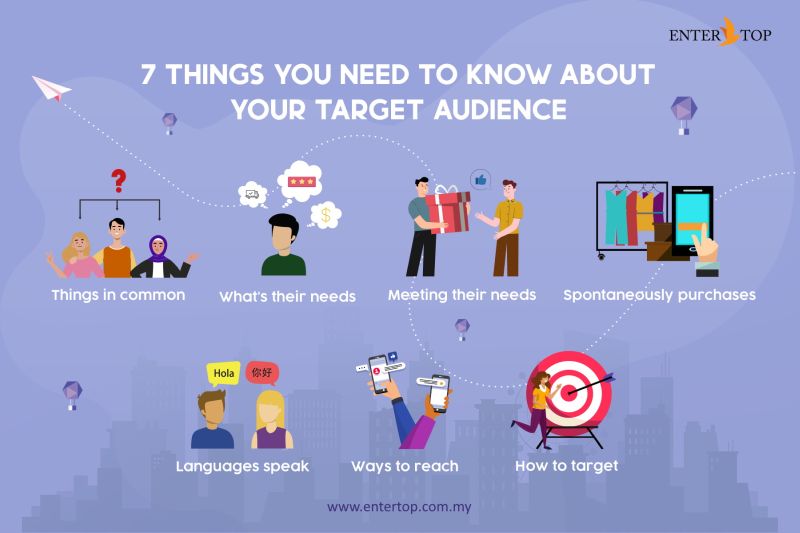7 things you need to know about your target audience

Introduction
We all want our target audiences to be as engaged, happy, and successful as possible. But if you’re like me, you may not always know exactly what they want or how to make them happy. So if you’re feeling overwhelmed, don’t worry—we’ve got your back. In this guide (and other guides), we’ll help you navigate the murky waters of targeting by giving tips on how to get inside your target audience’s head and understand who they really are.
- Things in common
- What’s their needs
- Meeting their needs
- Spontaneously purchases
- Languages speak
- Ways to reach
- How to target
1) Things in common
Here are some of the most important things you need to know about your target audience:
- Age, gender and education level.
- Income level.
- Location (where they live).
- What they like and don’t like in terms of products or services. You can find out what people want by asking them directly, but also by looking at other sources like social media and reviews on websites such as Yelp! or TripAdvisor.
2) What’s their needs
Having a clear picture of your target audience’s needs and wants is key. Once you know what they want, need and buy, it’s time to start thinking about how you can meet those needs with your product or service.
Asking yourself these questions will help:
- What products are my customers buying? What do they read? Watch? Listen to?
- Who is their family (and friends)? What do these individuals like/dislike about the product/service that I provide? How can I use this information when designing an ad campaign or marketing strategy?
3) Meeting their needs
When you’re trying to understand your audience, there are two main questions that you need to answer:
- What do they need?
- How can I meet those needs?
4) Languages speak
It’s important to know which languages your target audience speaks. If you’re selling products in the United States, for example, it’s likely that most of your customers speak English and Spanish. But if you’re selling shoes in China or France? Then knowing Mandarin or French is essential for success!
If you don’t know how many languages are spoken by your target audience (and what those languages are), consider hiring someone who does–or taking some time out of your busy schedule to learn them yourself! After all: there’s no point trying to sell something if nobody can understand what it is that you’re selling.
5) Ways to reach
There are a number of ways you can reach your target audience.
- Email marketing: Email is one of the most effective ways to reach potential customers and existing customers, as it allows you to send messages directly into their inboxes. You can use email marketing to drive traffic back to your site, promote offers and products, collect leads and build relationships with prospects. It’s also an inexpensive way for businesses on a budget that want to grow quickly without spending much money upfront (but make sure you’re following best practices!).
- Social media: Social media platforms such as Facebook, Twitter and Instagram are great places where people go online everyday–especially millennials–so they’re perfect places for companies like yours that want more visibility in this demographic segment (and others). If done correctly with consistent content creation/promotion strategies behind them over time along with tactics like paid advertising campaigns through third party networks like Facebook Ads Manager or Google AdWords then there’s no doubt about it: Social media is worth investing time into because it provides invaluable insights about customer behavior patterns which then allows companies like yours access insight into what types product features should be added next time around.”
6) How to target
Here are the steps to take:
- Know your audience. Who are they? How old are they? What do they like to do in their free time? What’s their education level and income bracket? Where do they live and work, and how often do they travel or move around in general? Knowing this information will help you create ads that resonate with them based on their interests and needs.
- Know your competition. Who else is doing similar things as what you’re doing right now–and how can you beat them at it by targeting an audience who isn’t getting reached by anyone else yet (or at least not as well). This way, when someone searches for something related to what your business offers but hasn’t heard about it yet, there will be no doubt in their mind that yours is the best option available!
Conclusion
We hope this article has helped you understand your target audience better. Don’t forget that it’s not just about knowing who they are, but also how to reach them and what language they speak. Don’t be afraid of taking risks if they will help make sure your message is heard by the right people!

